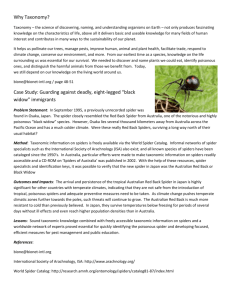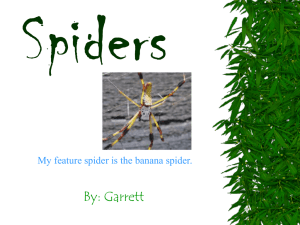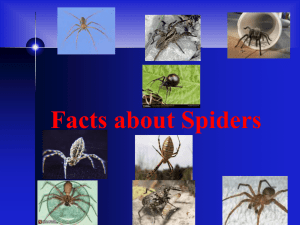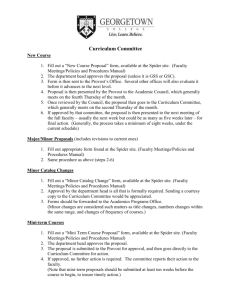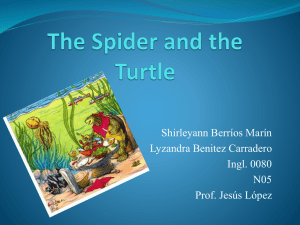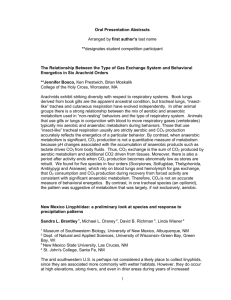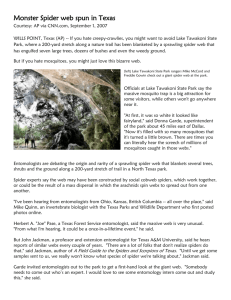IPM for Spiders
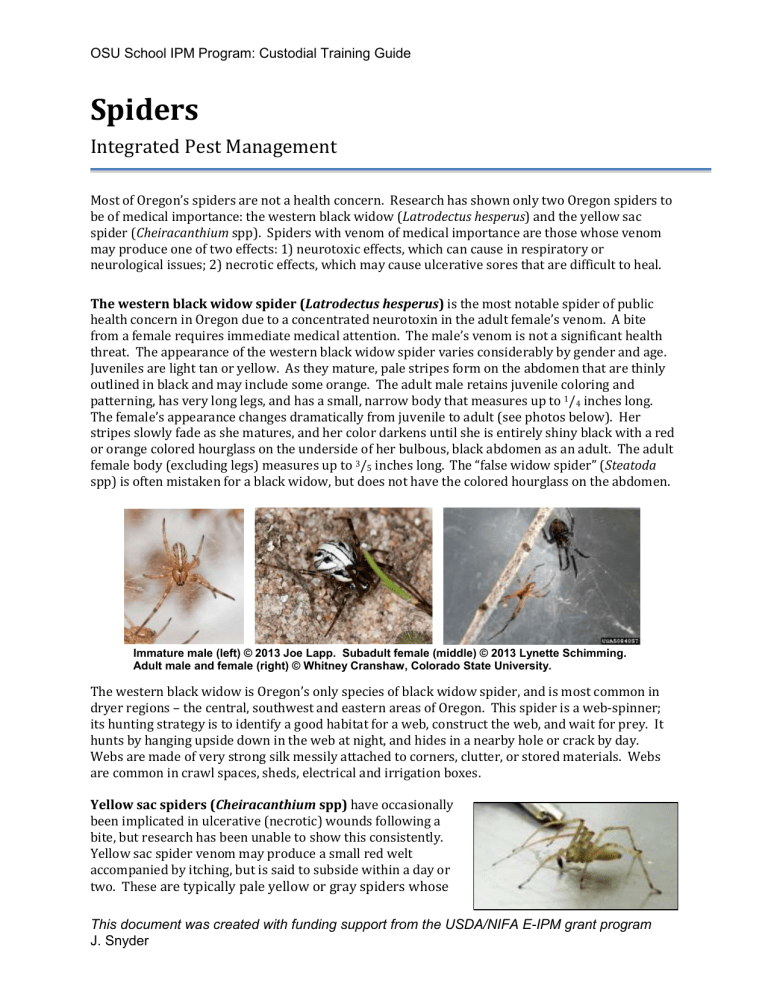
OSU School IPM Program: Custodial Training Guide
Spiders
Integrated Pest Management
Most of Oregon’s spiders are not a health concern. Research has shown only two Oregon spiders to be of medical importance: the western black widow (Latrodectus hesperus) and the yellow sac spider (Cheiracanthium spp). Spiders with venom of medical importance are those whose venom may produce one of two effects: 1) neurotoxic effects, which can cause in respiratory or neurological issues; 2) necrotic effects, which may cause ulcerative sores that are difficult to heal.
The western black widow spider (Latrodectus hesperus) is the most notable spider of public health concern in Oregon due to a concentrated neurotoxin in the adult female’s venom. A bite from a female requires immediate medical attention. The male’s venom is not a significant health threat. The appearance of the western black widow spider varies considerably by gender and age.
Juveniles are light tan or yellow. As they mature, pale stripes form on the abdomen that are thinly outlined in black and may include some orange. The adult male retains juvenile coloring and patterning, has very long legs, and has a small, narrow body that measures up to 1 /
4
inches long.
The female’s appearance changes dramatically from juvenile to adult (see photos below). Her stripes slowly fade as she matures, and her color darkens until she is entirely shiny black with a red or orange colored hourglass on the underside of her bulbous, black abdomen as an adult. The adult female body (excluding legs) measures up to 3 /
5
inches long.
The “false widow spider” (Steatoda spp) is often mistaken for a black widow, but does not have the colored hourglass on the abdomen.
Immature male (left) © 2013 Joe Lapp. Subadult female (middle) © 2013 Lynette Schimming.
Adult male and female (right) © Whitney Cranshaw, Colorado State University.
The western black widow is Oregon’s only species of black widow spider, and is most common in dryer regions – the central, southwest and eastern areas of Oregon. This spider is a web-spinner; its hunting strategy is to identify a good habitat for a web, construct the web, and wait for prey. It hunts by hanging upside down in the web at night, and hides in a nearby hole or crack by day.
Webs are made of very strong silk messily attached to corners, clutter, or stored materials. Webs are common in crawl spaces, sheds, electrical and irrigation boxes.
Yellow sac spiders (Cheiracanthium spp) have occasionally been implicated in ulcerative (necrotic) wounds following a bite, but research has been unable to show this consistently.
Yellow sac spider venom may produce a small red welt accompanied by itching, but is said to subside within a day or two. These
are typically pale yellow or gray spiders whose
This document was created with funding support from the USDA/NIFA E-IPM grant program
J. Snyder
OSU School IPM Program: Custodial Training Guide
body (without legs) measures
1
/
3
–
1
/
2
inches long. The two
noteworthy species in Oregon (C.
mildei and C. inclusum) are both active hunting spiders, frequently found indoors – particularly in fall and winter. Adults may take refuge by day in white “sacs” they build with their silk, often at the wall-ceiling interface, around windowsills, amid clutter, and behind baseboards. Yellow sac spiders are notable for their prevalence, tendency toward indoor environments, and their bite, which is comparable to the pain of a bee sting.
The brown recluse spider (Loxosceles reclusa) and its relatives (other Loxosceles spp) are not native to the Pacific Northwest U.S., nor are there any introduced populations established there.
The hobo spider (Tegeneria agrestis, renamed in 2013 to Eratigena agrestis) was introduced to the
Pacific Northwest United States in the 1930’s, and populations subsequently expanded throughout the region. In one U.S. study presented in 1987, the hobo spider’s venom was said to cause necrotic skin lesions in humans. However, an analysis of patients claiming to suffer from spider bites found over 30 different health conditions associated with skin necrosis that patients or their doctors falsely attributed to spider bites. Research also shows no significant difference in chemistry between the venom of hobo spiders from their native Europe (where their bite is not considered a problem) and the venom of hobo spiders from Oregon and Washington. Lab studies likewise show no effect of hobo spider venom on mammalian red blood cells. Numerous spider experts have concluded that hobo spider venom does not cause skin necrosis, and cite misinformed medical professionals and urban legend as perpetuating this myth.
General spider management tips for custodial staff:
1. Spiders are predators that seek insects as food. Reducing insect pests indoors will help reduce indoor spiders. Sanitation, exclusion, and staff education are the most effective tools for managing spiders.
2. Work with staff to reduce clutter and remove items stacked along wall bases. Accessing wall bases is critical for proper cleaning, and will help improve sanitation and reduce insect pests/prey.
3. For rooms with spider problems, place sticky monitoring traps along each wall, and check them weekly. Based on trap results, deduce the spider attractant (prey, shelter, etc.).
4. Make sure that any windows that staff open have tight-fitting screens.
5. Reduce indoor and outdoor lighting to minimize insects that are drawn to lights (and thus the spiders that are drawn to these insect prey). Consider requesting motion-sensing lighting.
6. Request brush-type door sweeps on exterior doors to reduce spider traffic indoors. NOTE: BE
PATIENT WITH THE TEMPORARY INCREASE IN SPIDER ENCOUNTERS IN THE FALL. MALE
SPIDERS WANDER IN SEARCH OF FEMALES IN THE FALL, AND MAY WANDER INDOORS. COLD
WEATHER WILL CAUSE SOME SPIDERS TO GRAVITATE INDOORS AS WELL.
7. Pesticides are not effective for the long-term management of spiders.
For more information about spiders and their management:
Jennifer L. Snyder. “School Integrated Pest Management for Spiders” found at: http://www.ipmnet.org/tim/IPM_in_Schools/Pests!_Pests!_Pests!.html
UC IPM Online. “Spiders” found at: http://www.ipm.ucanr.edu/PMG/PESTNOTES/pn7442.html
Rick Vetter and Art Antonelli. “How to identify (or misidentify) the hobo spider” found at: http://pep.wsu.edu/pdf/PLS116_1.pdf
This document was created with funding support from the USDA/NIFA E-IPM grant program
J. Snyder
